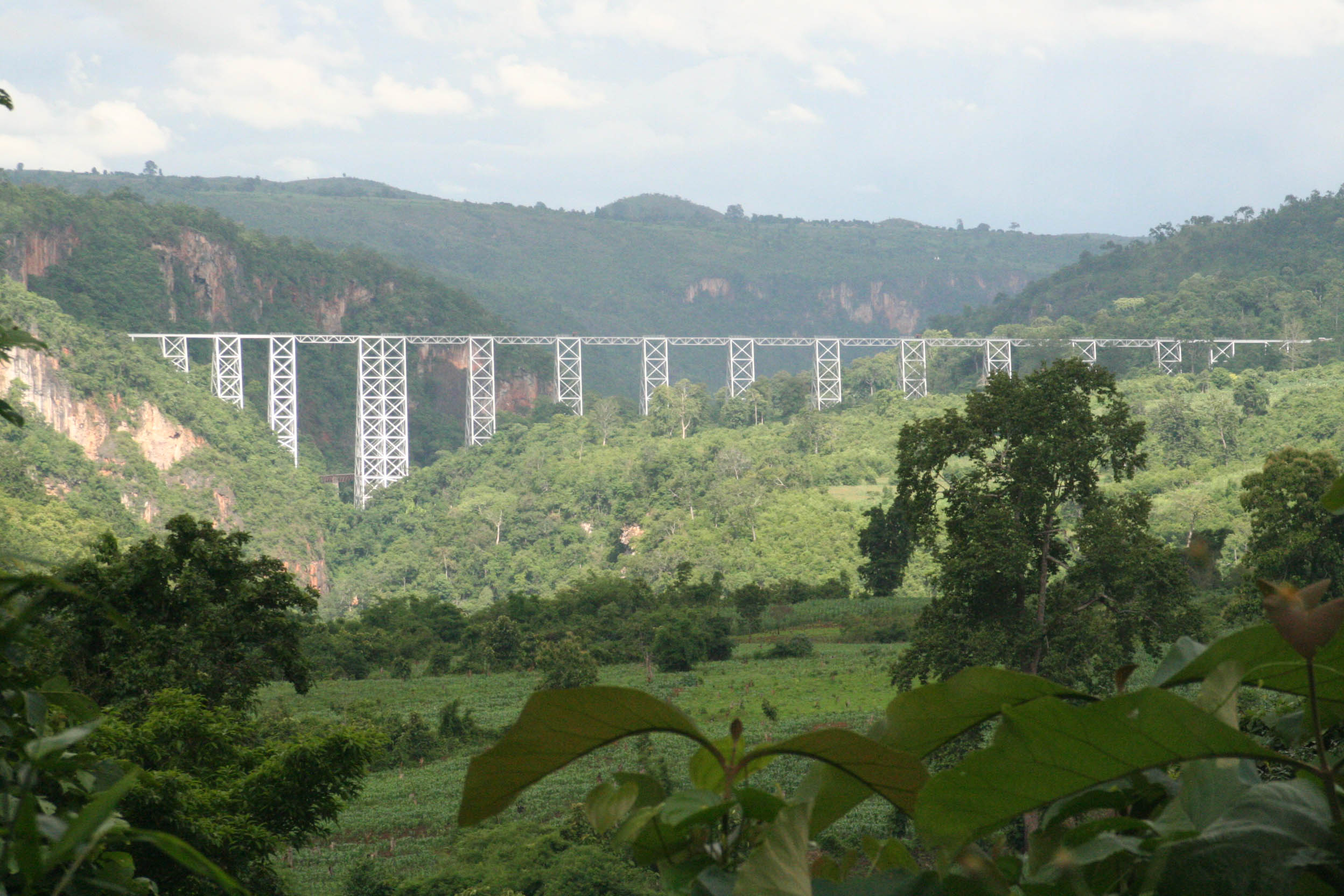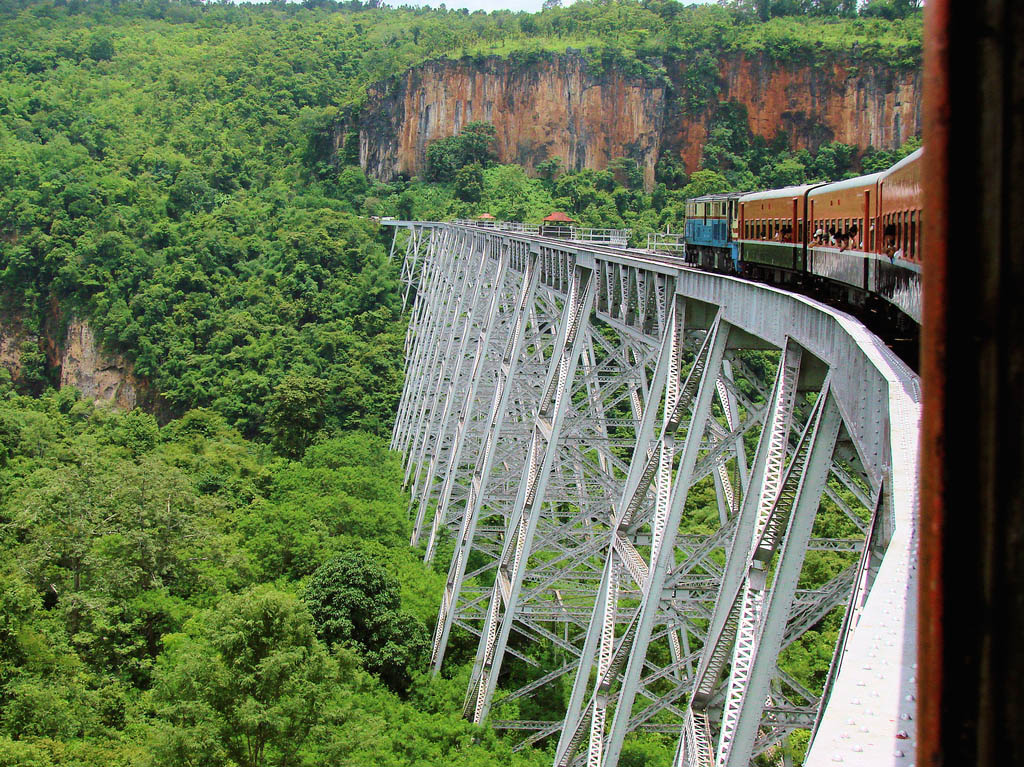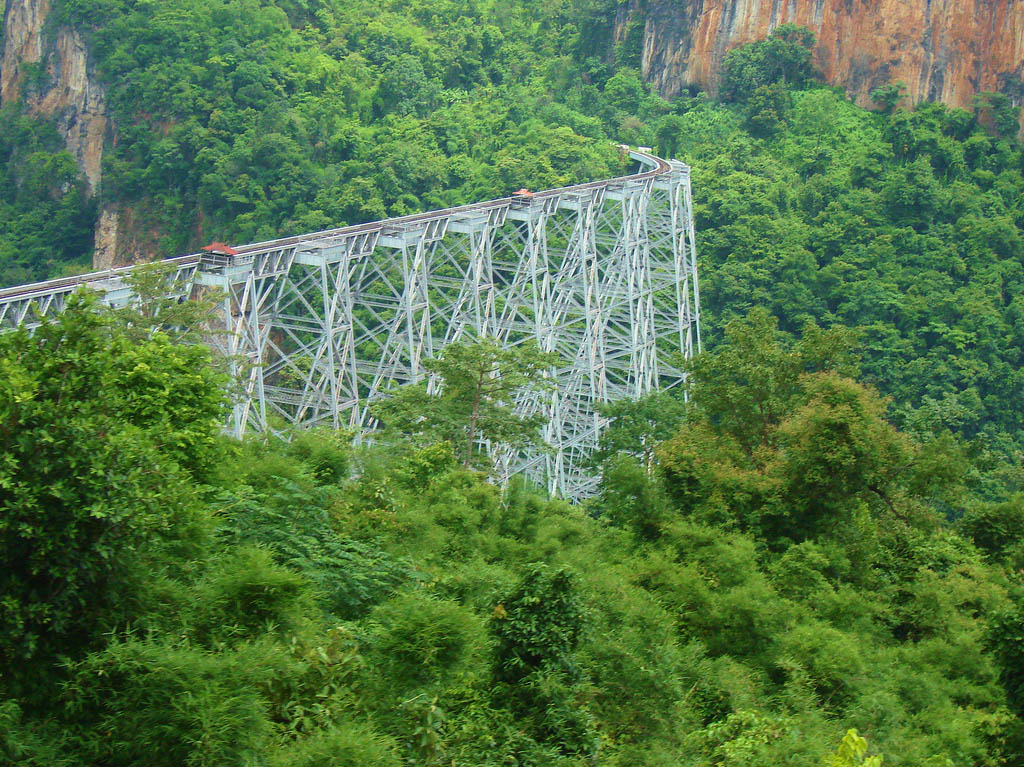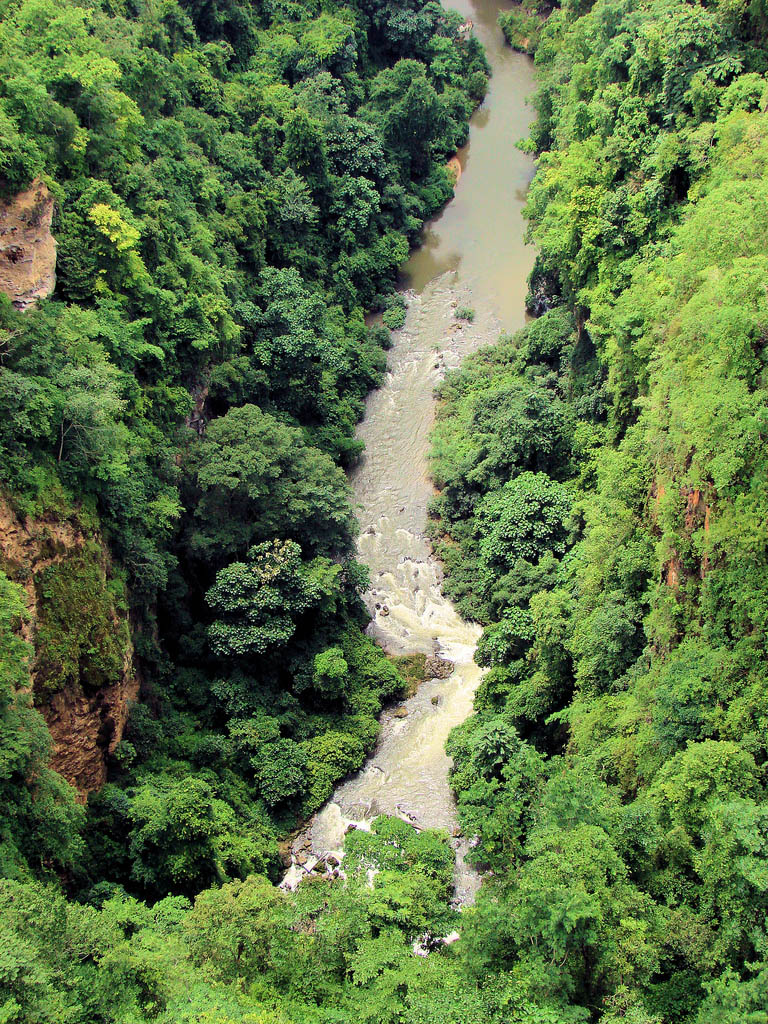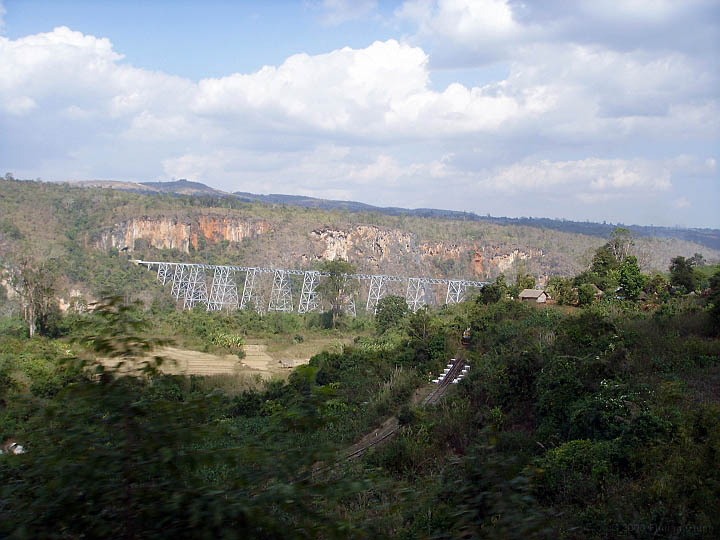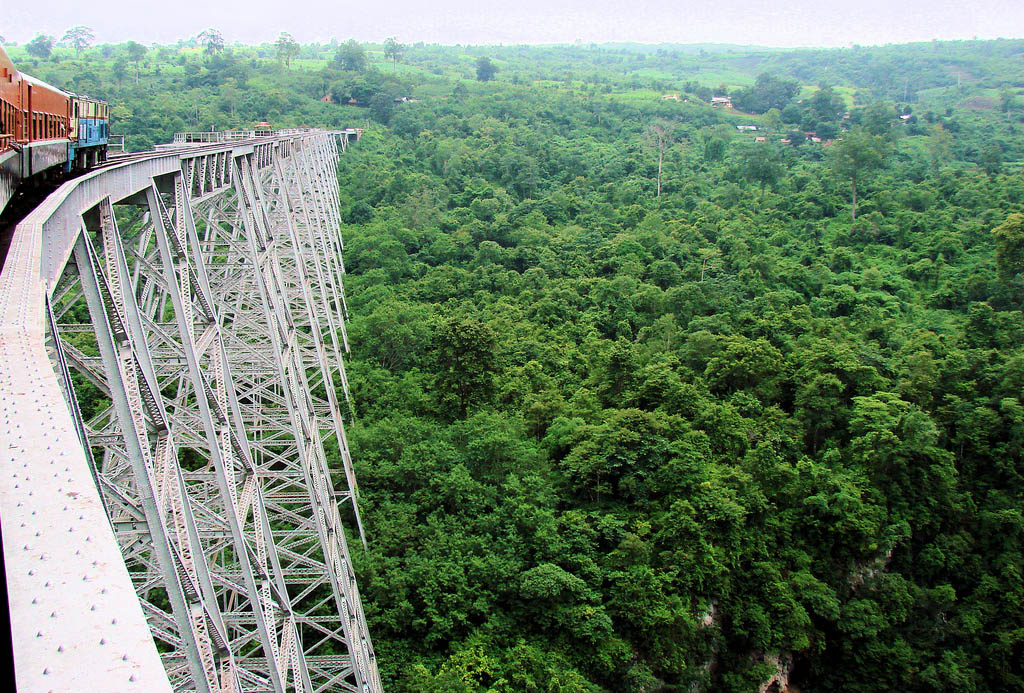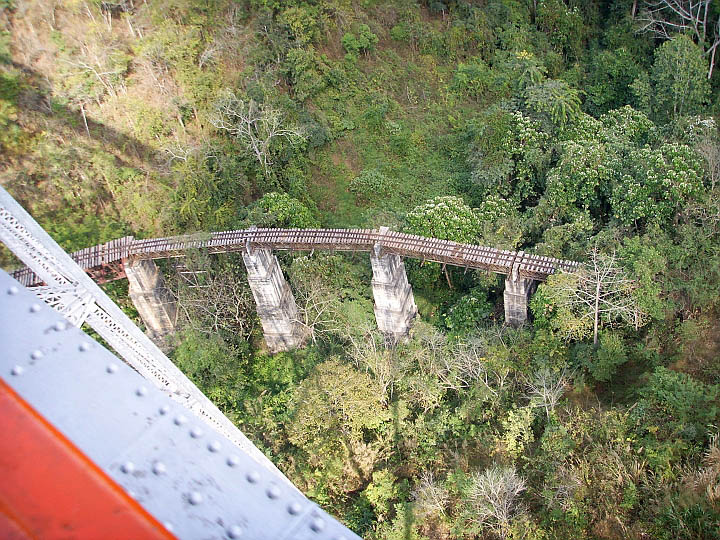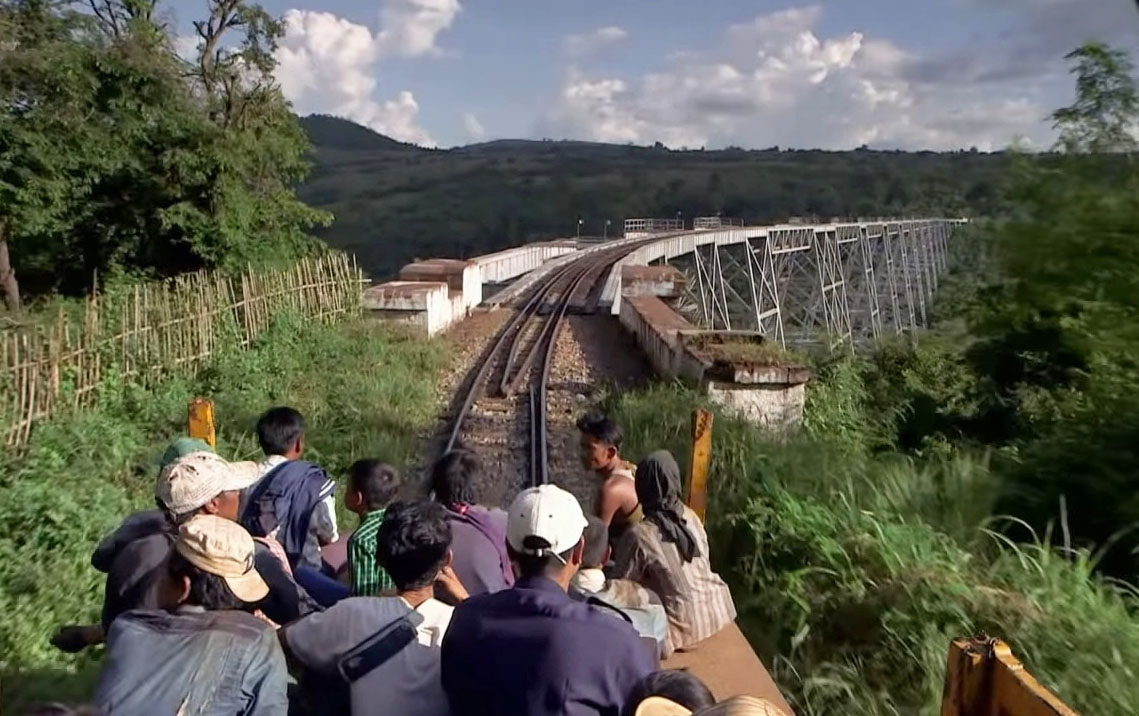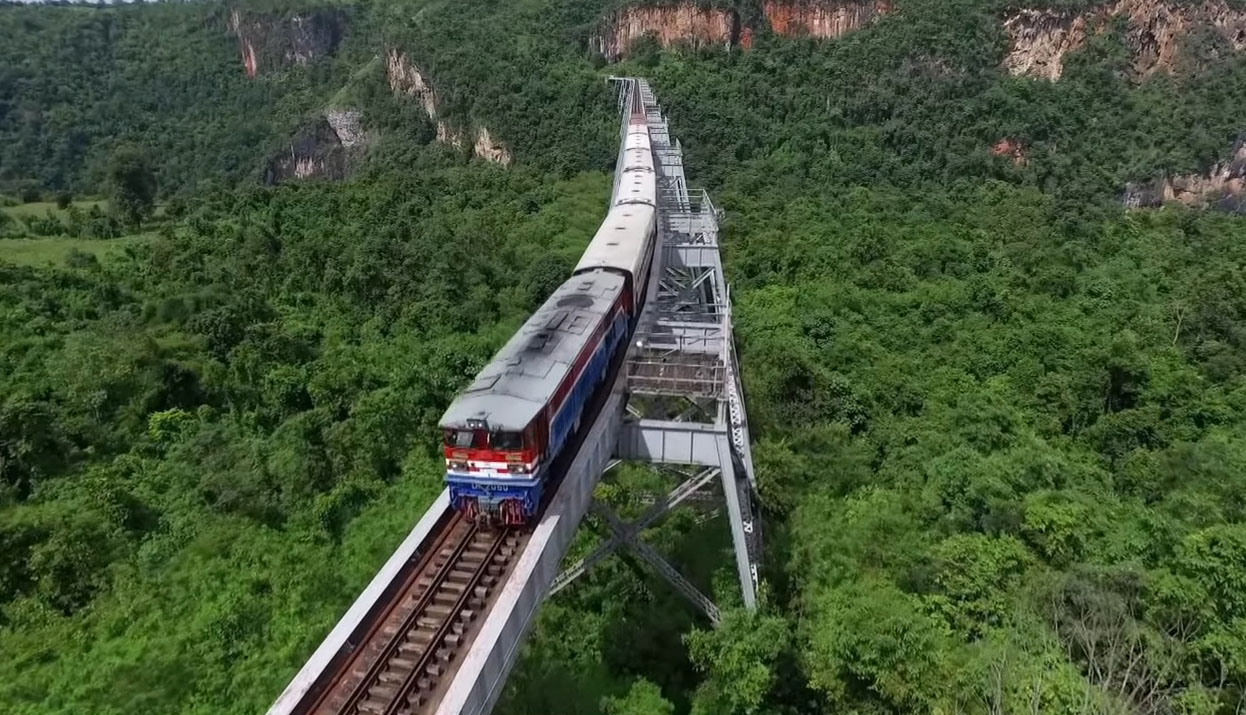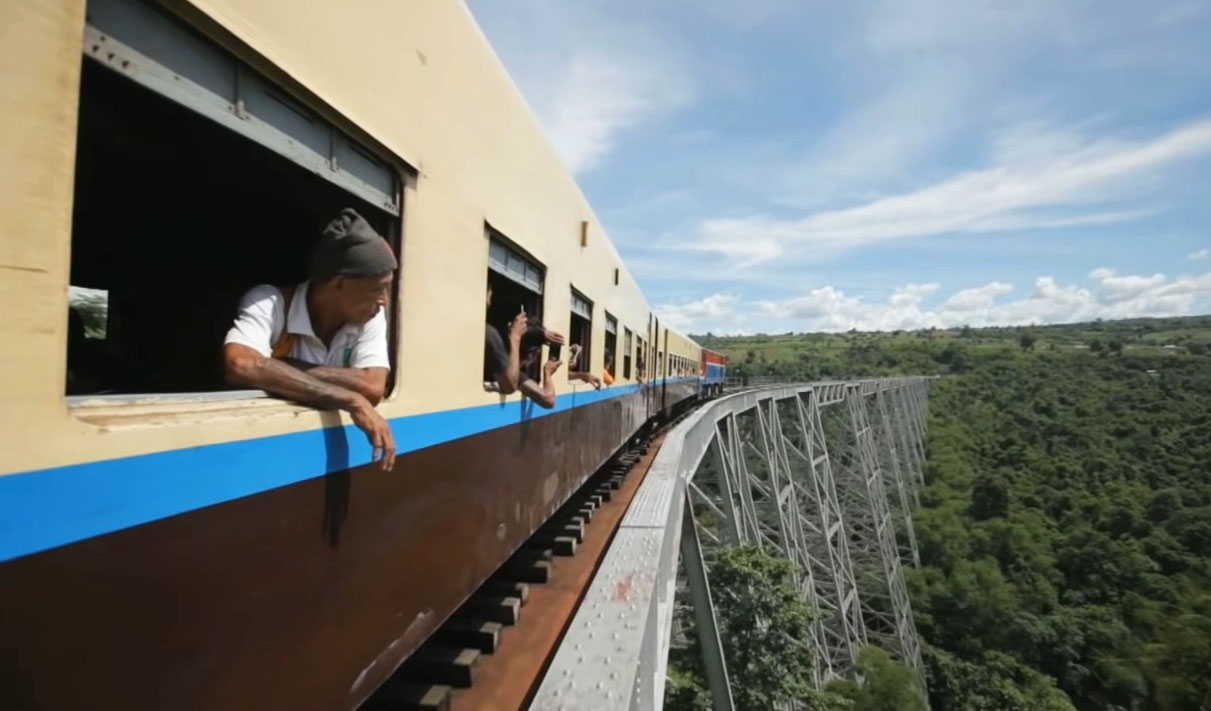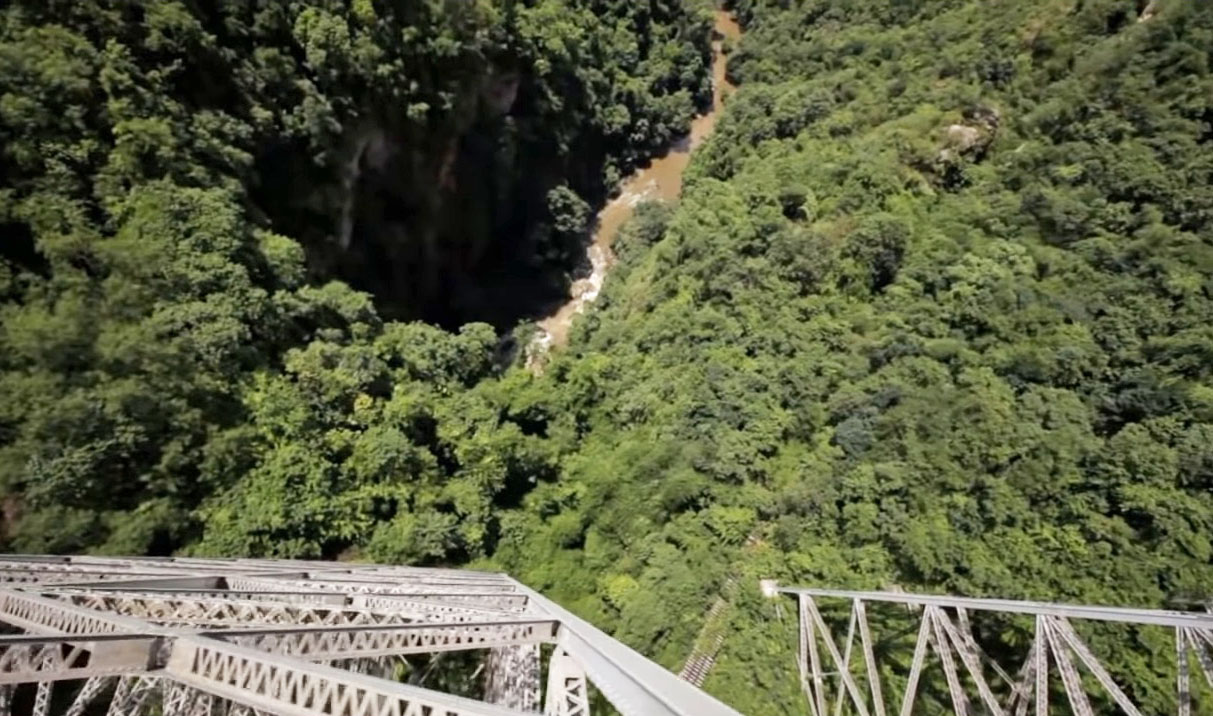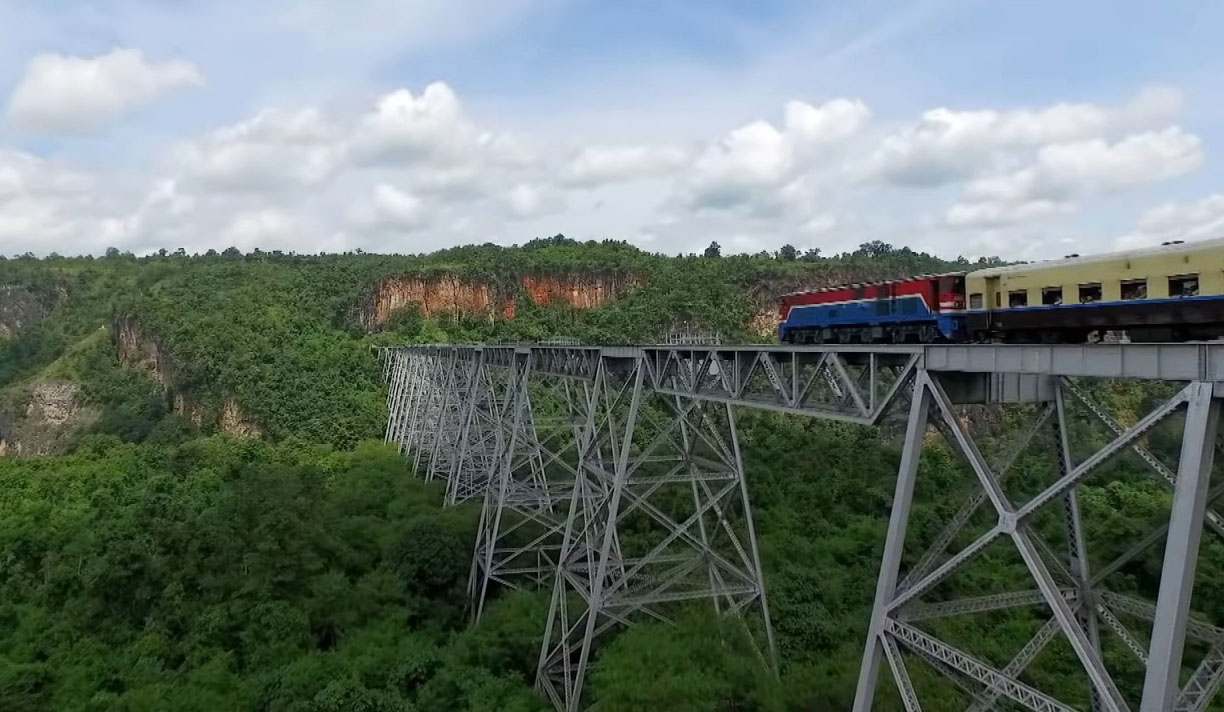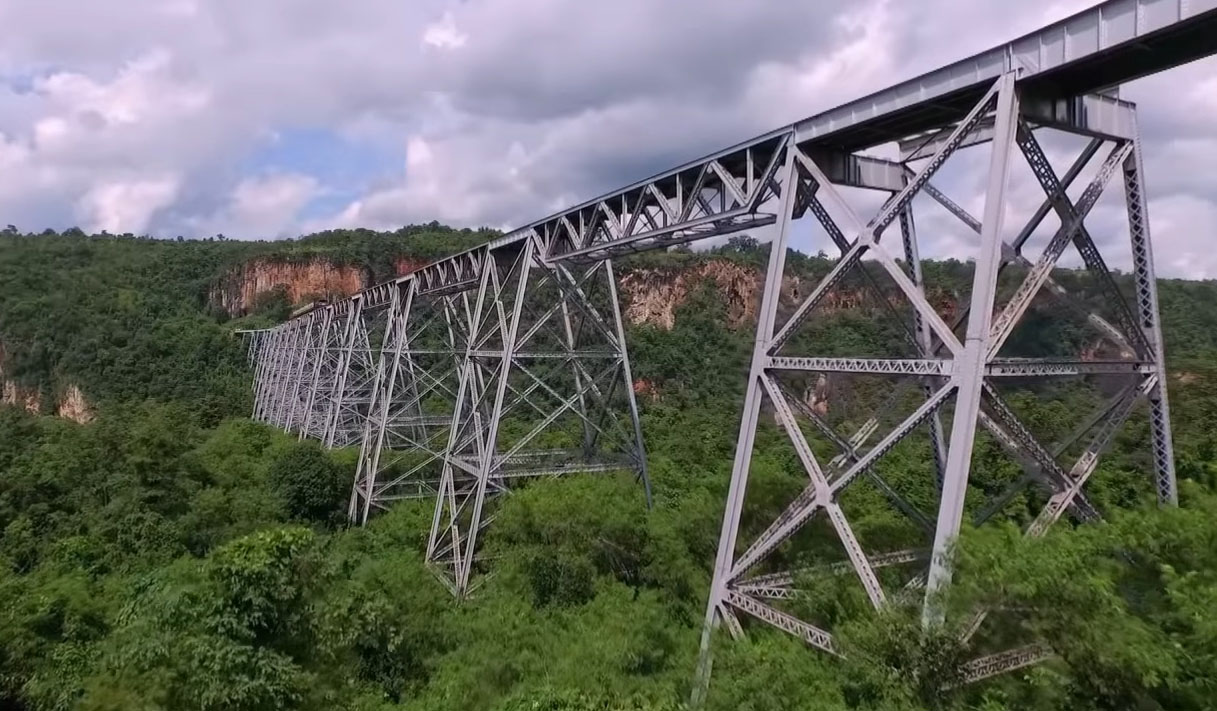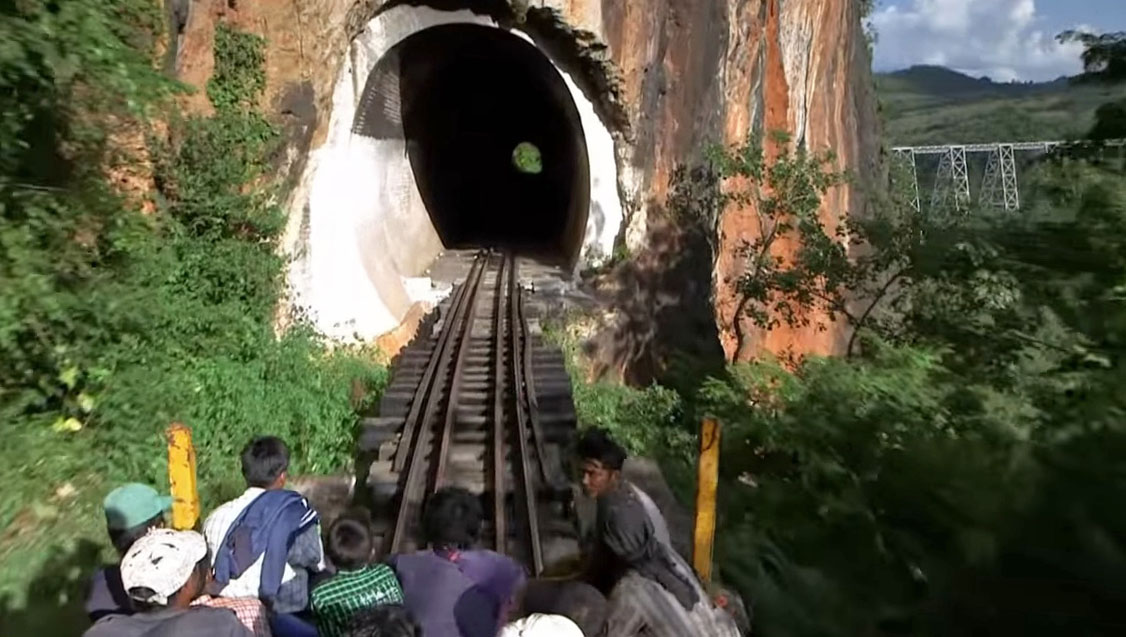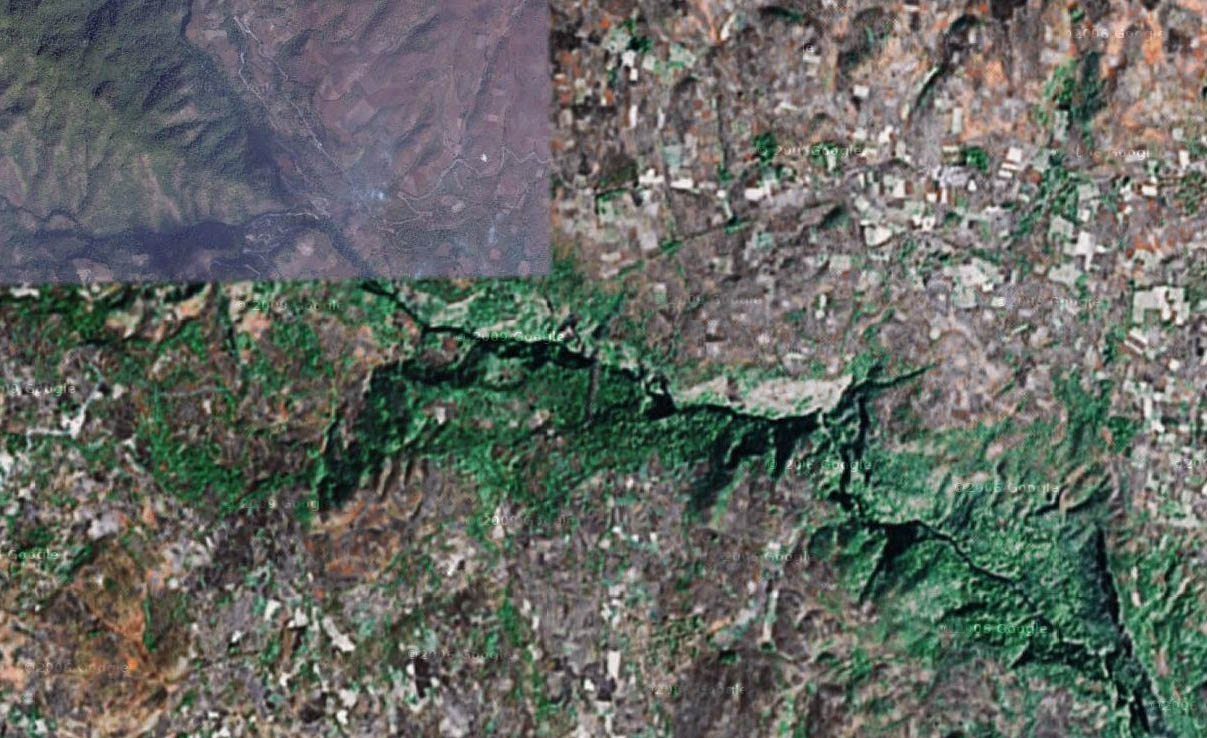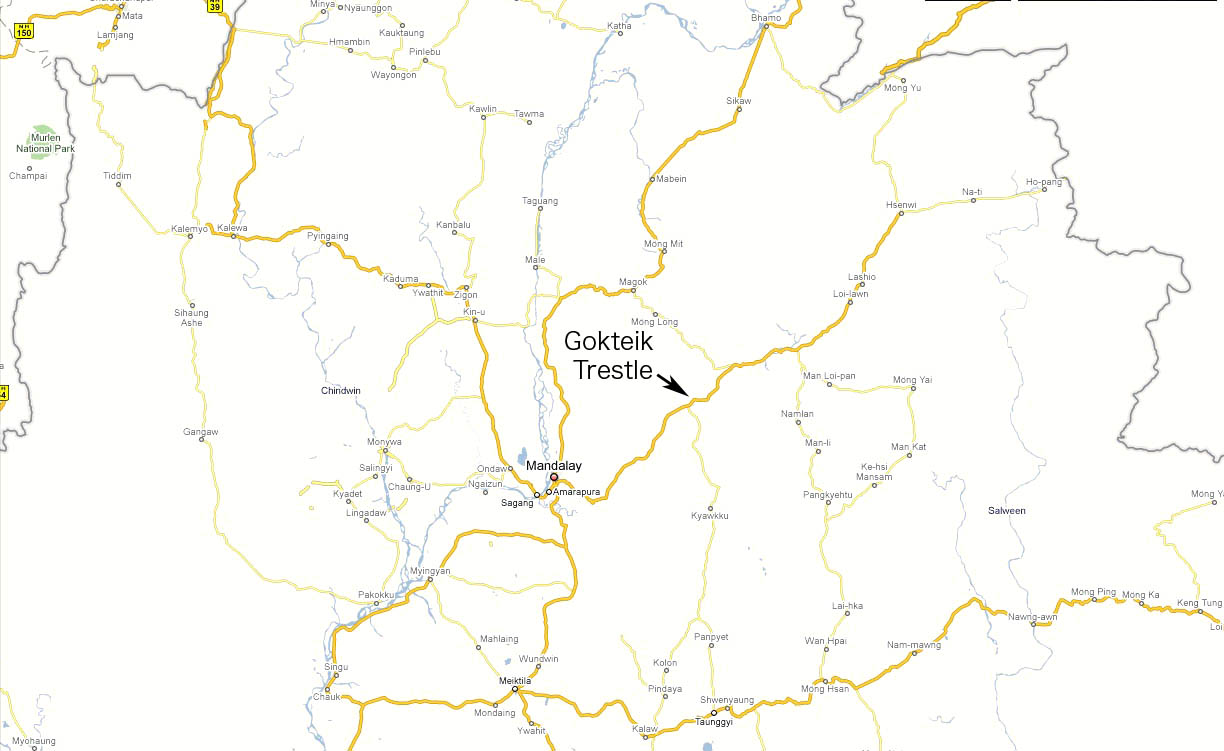Gokteik Railway Viaduct
Gokteik Railway Viaduct
Nawnghkio, Shan, Myanmar
335 feet high / 102 meters high
120 foot span / 37 meter span
1901
Image by Martin Callum.
The largest railway trestle in the world upon its completion in 1901, the Gokteik Viaduct is the highest bridge in Myanmar. Located in the center of the country about 60 miles (100 kms) northeast of the largest city of Mandalay, the rail line was constructed as a way for the British Empire to expand their influence in the region. Constructed when the country was originally called Burma, the bridge was designed and fabricated by the Pennsylvania Steel Company and shipped overseas. Construction was overseen by Sir Arthur Rendel, engineer for the Burma Railroad Company. Stretching 2,260 feet (689 mtrs) from end to end, the viaduct has 14 towers that span 40 feet (12 mtrs) along with a double tower 80 feet (24 mtrs) long. These 15 towers support 10 deck truss spans of 120 feet (37 mtrs) along with six plate girder spans 60 feet (18 mtrs) long and an approach span of 40 feet (12 mtrs). Many sources have put the height of the bridge at 820 feet (250 mtrs). This is supposedly a measurement to the river level as it flows underground through a tunnel at the point it passes underneath the trestle. The true height of the bridge as measured from the rail deck to the ground on the downstream side of the tallest tower is 335 feet (102 mtrs).
Although larger concrete viaducts and steel cantilever bridges were constructed before and after Gokteik, no other conventional box tower and girder type steel trestle has ever exceeded it in size except for the monstrous Lethbridge Viaduct in Alberta, Canada which is about the same in height but more than twice the length. The Joso bridge in the U.S. state of Washington, the Poughkeepsie bridge in the U.S. state of New York and the original Kinzua viaduct in the U.S. state of Pennsylvania are the only other traditional steel trestles that are equal in size to Gokteik.
Gokteik also had the tallest bridge piers in the world at the time of its completion at 97.5 meters. The current record is now held by France's Millau Viaduct. Prior to Millau's record breaking bridge piers of 245 meters, the history of these towering structures has been almost entirely in Europe outside of two U.S. spans. Before Millau the 178 meter piers of Germany's Kochertalbrücke held the record for 25 years. Before Kocher the tallest were the 147 meter pier of Italy's Rago Viaduct. Austria held the record before Rago with the famous 145 meter tall piers of Europabrücke. Before that California's Pit River Bridge had the tallest at 109 meters.
Before California's Pit River crossing, the tallest purely concrete and stone pier was on France's Fades Viaduct at 92.3 meters along with Switzerland's 99 meter tall Sitter Viaduct (depending on where you measure the top). Prior to Fades and Sitter was Gokteik at 97.5 meters. Before Gokteik the tallest steel bridge pier was the central tower of the Kinzua Viaduct at 87 meters. Before Kinzua the 1862 Grandfrey Viaduct of Switzerland held the record with steel and stone piers 79.5 meters high. In 1857 the Crumlin Viaduct was the tallest with purely steel piers 64 meters tall while the 1856 Sitter Viaduct had stone and iron piers of approximately 56 meters in height. The 1852 Portage Viaduct had masonry and timber piers of 67 meters. Prior to Portage there were few true "piers" of great height, only stone aqueducts such as the Pont Roquefavour in France and the Ponte Delle Torri in Spoleto, Italy with structural heights of 82 meters. Spain's Puente Nuevo or New Ronda Bridge also has a structural height in the 100 meter height range though the masonry walls hug the sides of the gorge cliff more like a giant foundation then a true stand-alone pier or aqueduct.
Gokteik bridge can be reached by taking a train from Mandalay or Pyin U Lwin north towards Nawnghkio where the bridge is located about 3 miles (5 kms) further east. A round trip ticket from Mandalay to the bridge costs around $8 for foreigners. Burmese soldiers are stationed on the train as well as on top of and underneath the bridge to prevent any potential attacks.
Image by Marisa Herrera.
Image by Marisa Herrera.
Image by Marisa Herrera.
Image by Florian Grupp.
Image by Marisa Herrera.
A small trestle is located beneath the Gokteik Viaduct and was probably used to bring in materials to build the massive trestle. Image by Florian Grupp.
Image by Goran BMW Overlander.
Image by Goran BMW Overlander.
Image by Goran BMW Overlander.
Image by Goran BMW Overlander.
Image by Goran BMW Overlander.
Image by Goran BMW Overlander.
Image by Goran BMW Overlander.
Image by Goran BMW Overlander.
Image by Goran BMW Overlander.
Gokteik Viaduct postcard.
Gokteik Viaduct satellite image. The bridge can faintly be seen in the very center of the image.
Gokteik Viaduct location map.
